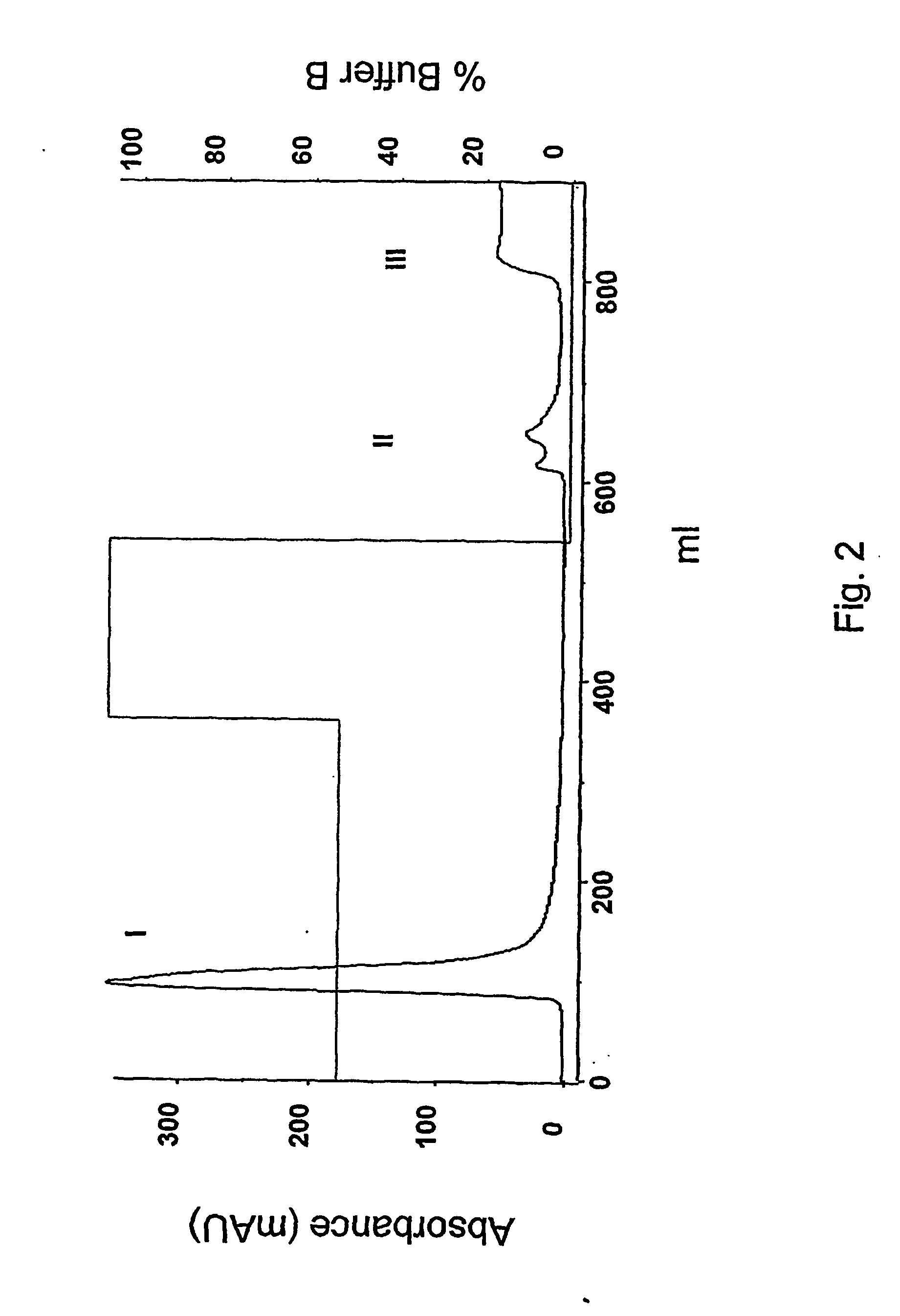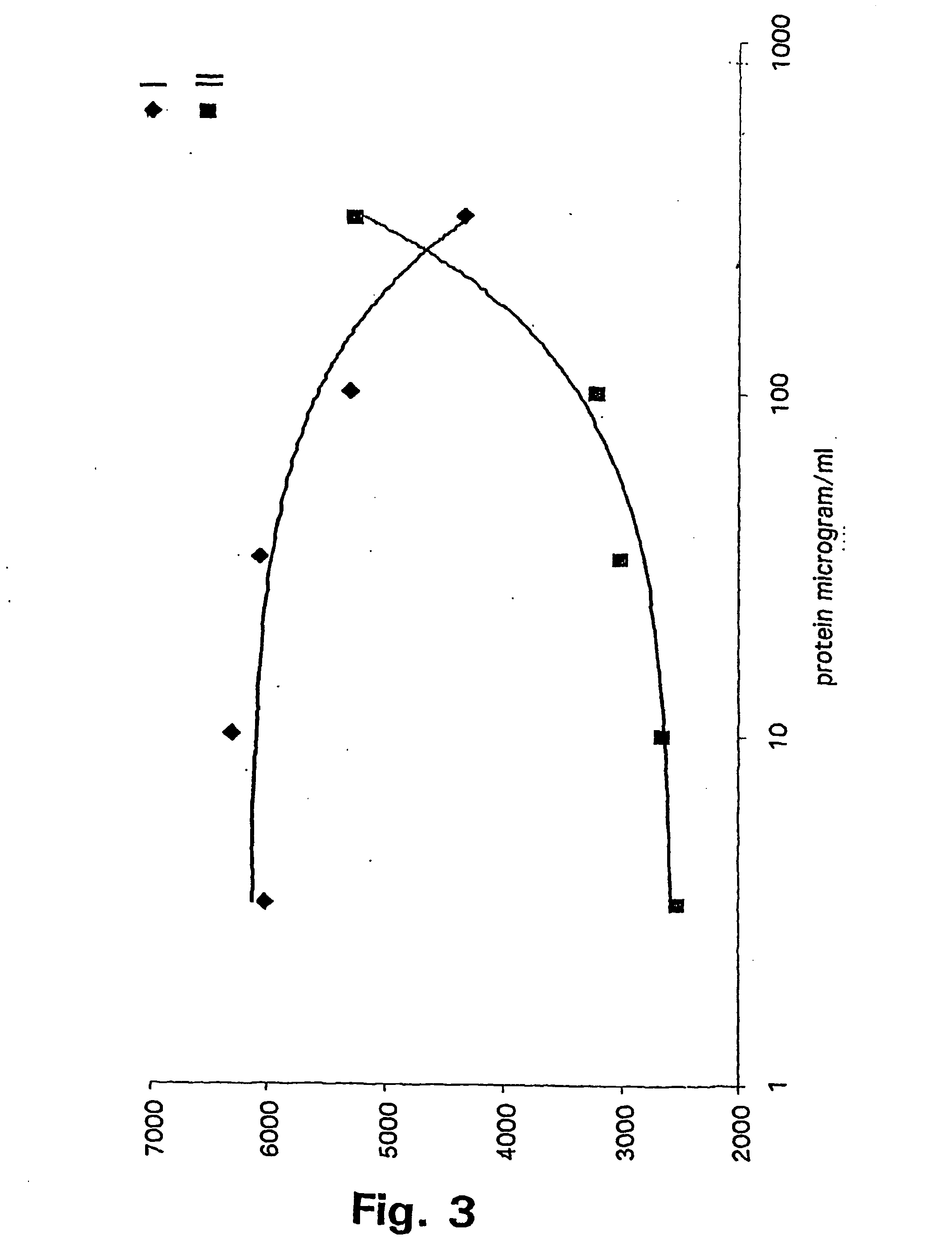Method for refolding of proteins
a protein and refolding technology, applied in the field of protein biochemistry, can solve the problems of complex refolding process, complex refolding process, and inability to biologically active heterologous proteins produced by transformant cells
- Summary
- Abstract
- Description
- Claims
- Application Information
AI Technical Summary
Benefits of technology
Problems solved by technology
Method used
Image
Examples
example 1
Methods and Materials
[0058] Urea, phenylmethylsulfonyl flouride (PMSF), isopropyl-b-D thlogalactidase (IPTG), bicin-choninic acid solution (BCA) and tris[hydroxymethyl]aminomethane (tris) were purchased from Sigma. Streamline 25, Sephadex G50 and Q-sepharose fast flow anion-exchange material were purchased from Pharmacia, Sweden.
Production Human Beta-2 Microglobulin.
[0059] Recombinant human beta-2 microglobulin inserted into the pT7H6 vector and expressed in BL21 (DE3) has been described previously (Pedersen et al., 1995). This vector contains a hexahistine (H6) tag followed by a Factor Xa (FXa) cleavage site fused in front of the mature human beta-2 microglobulin. Recombinant BL21 (DE3) cells were plated on a Luria-Bertani (LB)-Ampicillin plate and grown overnight at 37 C. One clone was picked sterile from an over night culture were inoculated and grown in 200 ml LB medium in 200 μg / ml ampidillin in a thermoshaker. Initially the temperature was set to 37 C, but as soon as visi...
PUM
| Property | Measurement | Unit |
|---|---|---|
| concentration | aaaaa | aaaaa |
| concentration | aaaaa | aaaaa |
| concentration | aaaaa | aaaaa |
Abstract
Description
Claims
Application Information
 Login to View More
Login to View More - R&D
- Intellectual Property
- Life Sciences
- Materials
- Tech Scout
- Unparalleled Data Quality
- Higher Quality Content
- 60% Fewer Hallucinations
Browse by: Latest US Patents, China's latest patents, Technical Efficacy Thesaurus, Application Domain, Technology Topic, Popular Technical Reports.
© 2025 PatSnap. All rights reserved.Legal|Privacy policy|Modern Slavery Act Transparency Statement|Sitemap|About US| Contact US: help@patsnap.com



